Dieting and Weight Loss
The Roll-a-Ray Fat Remover
Introduced in 1948, by 1950 the Roll-a-Ray had been banned by the FDA. It was simply two rubber rollers with an electric light bulb mounted behind them.
Detroit Free Press - Nov 21, 1948

FDA Consumer - Feb 1977
Posted By: Alex - Sat Aug 17, 2024 -
Comments (3)
Category: Frauds, Cons and Scams, 1940s, Dieting and Weight Loss
English Chemist’s Secret Formulation
Transform from a "fat & lonely" cartoon into a "slim & desirable" photograph in 3 days.It's got my vote for the best before-and-after figures of any weight-loss ad.

Daily Mirror - Mar 25, 1972
Posted By: Alex - Fri Jul 19, 2024 -
Comments (0)
Category: Advertising, 1970s, Dieting and Weight Loss
Dr. Dante’s Figure Control Record
Just listen to Dr. Dante's exciting voice and lose weight permanently. No exercise! "For Women Only"The album was released in 1972.
Some trivia about it from discogs.org: "this album is clearly visible in the movie Gremlins which came out in 1984. Towards the end of the movie, after they blow up the movie theater, when they’re chasing Stripe through the department store Billy is walking through the electronics department with a bat and this album is highlighted in that scene."
audio via: thecrosspollinator
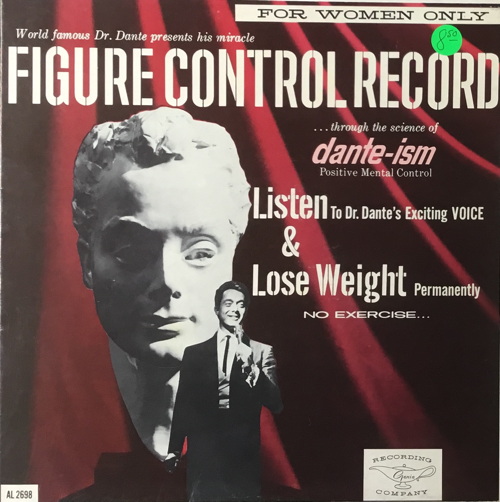
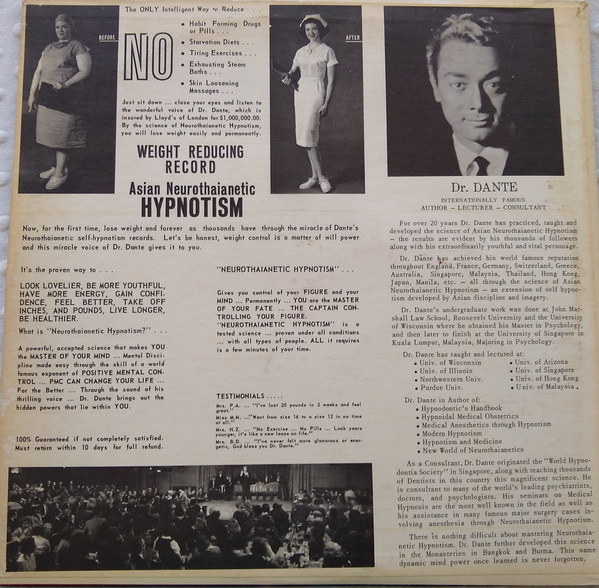
Posted By: Alex - Tue Mar 19, 2024 -
Comments (2)
Category: Vinyl Albums and Other Media Recordings, 1970s, Dieting and Weight Loss
Gladys Sellew’s 15-cents-a-day diet
Back in the 1930s, sociologist Gladys Sellew decided to find out if it was possible to survive spending only 15 cents a day on food. I think, in today's money, that would be about $3/day.She used herself as a test subject and, five years later, reported that not only was it possible, but she actually only spent an average of 13 cents a day on food.
She said she was going to remain on her frugal diet for the rest of her life.
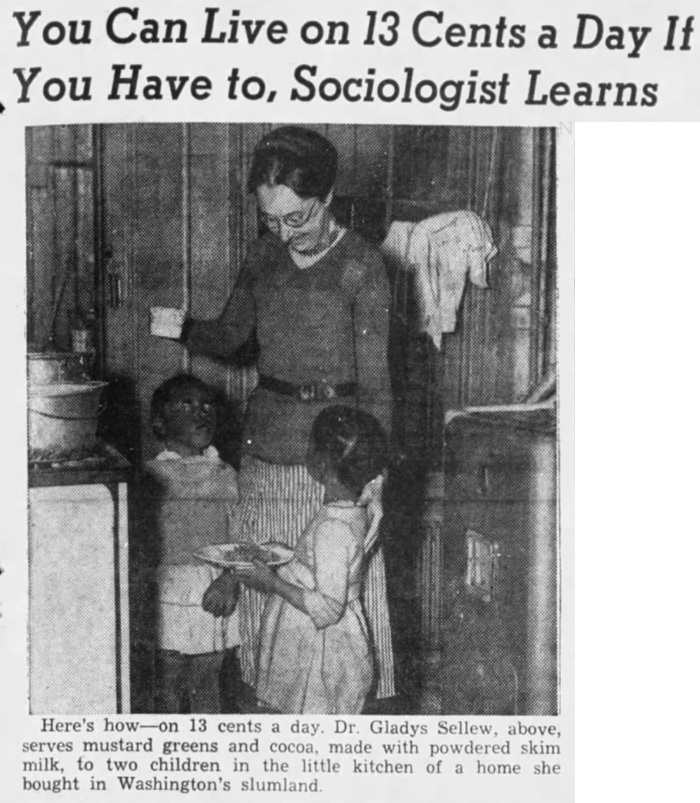
Austin American Statesman - June 3, 1942
The headline below claimed that she gained weight on her diet, but in the picture above it sure doesn't look like she had any extra weight on her.
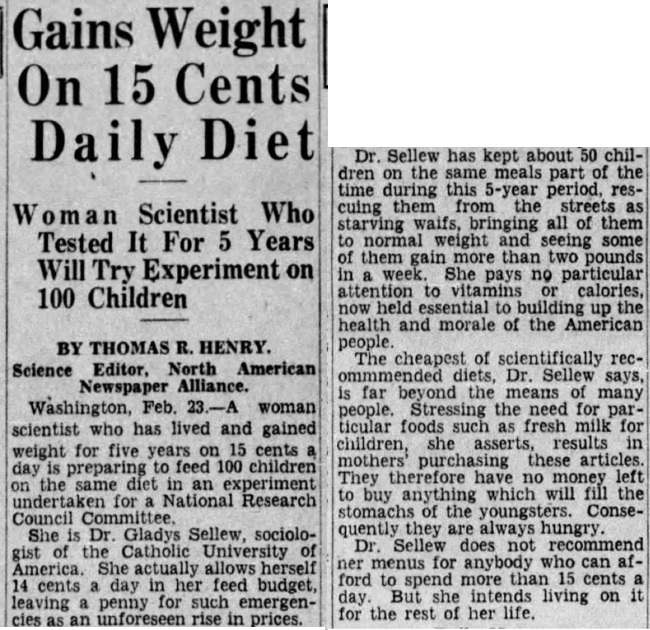
Hartford Courant - Feb 24, 1941
A typical day's meal plan:
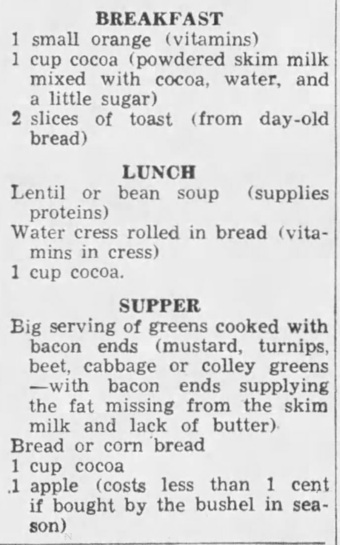
Austin American Statesman - June 3, 1942
By way of comparison, here's a more recent version of an experiment in frugality: "Spending $5 a day on food. Is it possible?"
Posted By: Alex - Mon Dec 04, 2023 -
Comments (0)
Category: Food, 1940s, Dieting and Weight Loss
Spank yourself slim
Slimming advice from Mildred Graves Ryan, author of Clothes For You (1954).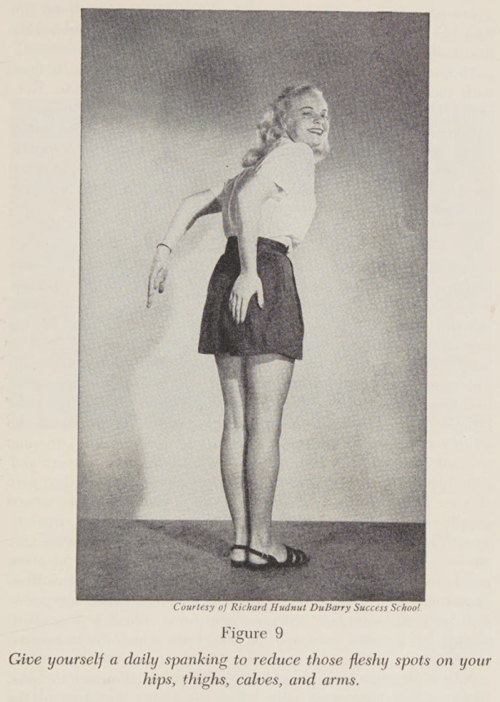
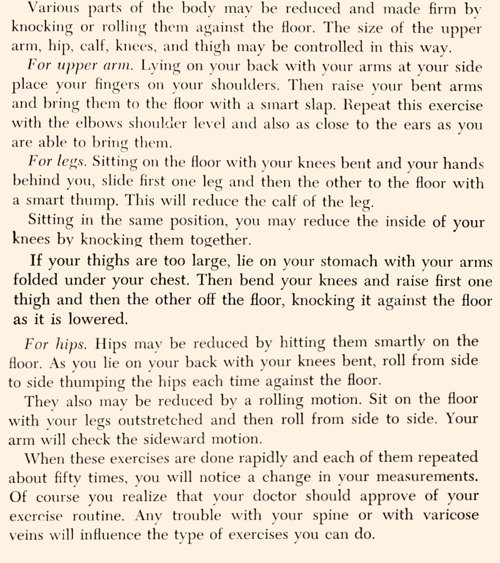
via Oddball Emporium
Posted By: Alex - Tue Oct 10, 2023 -
Comments (0)
Category: Exercise and Fitness, 1950s, Dieting and Weight Loss
Wate-On
Based on the strange clothing and the thing that looks like an asteroid in the top right corner, I think the two people are supposed to be futuristic space travelers of some kind. Why they're in an ad for a weight-gain product, I don't know.
Sports Illustrated - June 5, 1978
Posted By: Alex - Sun Sep 17, 2023 -
Comments (2)
Category: Advertising, Space Travel, 1970s, Dieting and Weight Loss
Scale in Soda-Fountain Seat
Watch your weight increase as you eat.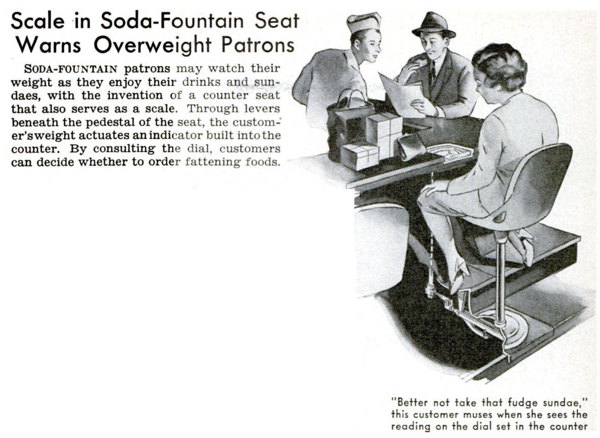
Popular Science - Dec 1938
Posted By: Alex - Sat Aug 12, 2023 -
Comments (0)
Category: Inventions, 1930s, Dieting and Weight Loss
Ear Stapling (aka Staplepuncture)
Text from The Encyclopedia of Alternative Medicine and Self-Help (1978), edited by Malcolm Hulke: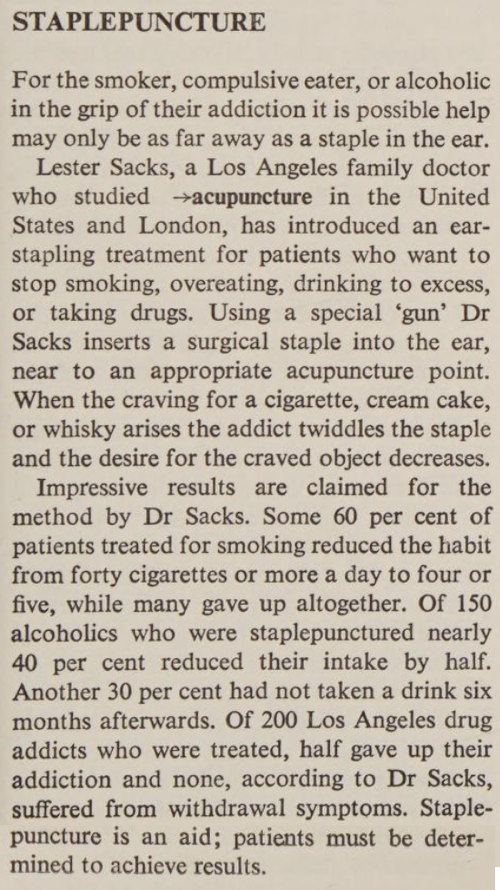
What the Cleveland Health Clinic says about ear stapling:
What you won't see is any scientific proof to back those claims up or doctors extolling the practice's health benefits. There's some evidence supporting the use of auricular acupuncture for weight loss, but — while some acupuncturists offer the service — ear stapling isn't the same thing as auricular acupuncture.
The lack of scientific evidence supporting ear stapling for weight loss is one of the reasons most states don't regulate it — there'd need to be some evidence that the practice is legitimate, and there isn't any.
Posted By: Alex - Wed Aug 09, 2023 -
Comments (2)
Category: Dieting and Weight Loss
Ann Wigmore’s Recipes for Longer Life
Ann Wigmore believed that the secret to good health and a long life was eating 1) a lot of wheatgrass and 2) only raw food. If those appeal to you, you'll find lots of recipes in her cookbook below, Recipes for Longer Life (published in 1978, available at archive.org).Wikipedia says that she lived to be 84, which is a relatively long life, but not remarkable. She died of smoke inhalation from a fire. So maybe she would have lived much longer if not for that bad luck?
Wikipedia also says, "many of her claims were denounced as quackery, and her qualifications were never confirmed to be genuine."
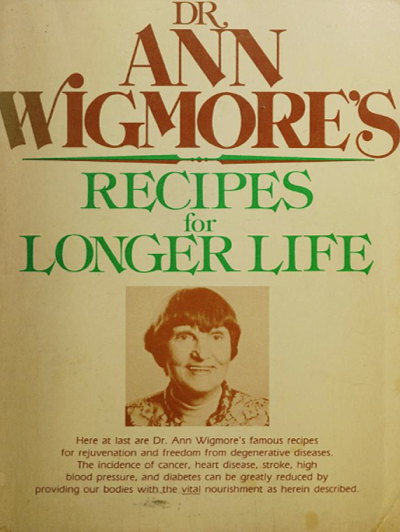

I guess she wasn't keen on melons: "eat them alone or leave them alone".

Posted By: Alex - Fri Jun 16, 2023 -
Comments (3)
Category: Food, Cookbooks, Patent Medicines, Nostrums and Snake Oil, Dieting and Weight Loss
Calories Don’t Count
Dr. Herman Taller was arguably ahead of his time with his assertion that a high-protein diet was more effective for weight loss than simply restricting calories. However, it was his promotion of "CDC" (Calories Don't Count) capsules that got him into trouble. He claimed that these capsules not only would help with weight loss but would also lower cholesterol, treat heartburn, improve the complexion, increase resistance to colds, and boost the sex drive. The FDA disagreed, noting that the capsules primarily contained safflower oil. Taller was eventually convicted of mail fraud.More info: Wikipedia, Quackwatch
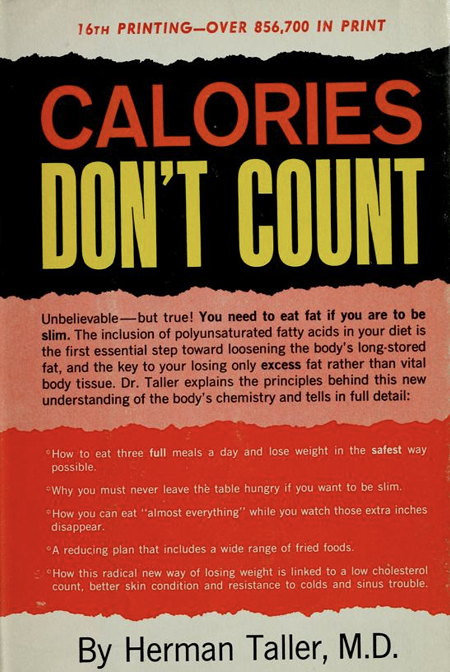
Posted By: Alex - Sun May 28, 2023 -
Comments (0)
Category: Health, Dieting and Weight Loss

| Who We Are |
|---|
| Alex Boese Alex is the creator and curator of the Museum of Hoaxes. He's also the author of various weird, non-fiction, science-themed books such as Elephants on Acid and Psychedelic Apes. Paul Di Filippo Paul has been paid to put weird ideas into fictional form for over thirty years, in his career as a noted science fiction writer. He has recently begun blogging on many curious topics with three fellow writers at The Inferior 4+1. Contact Us |




